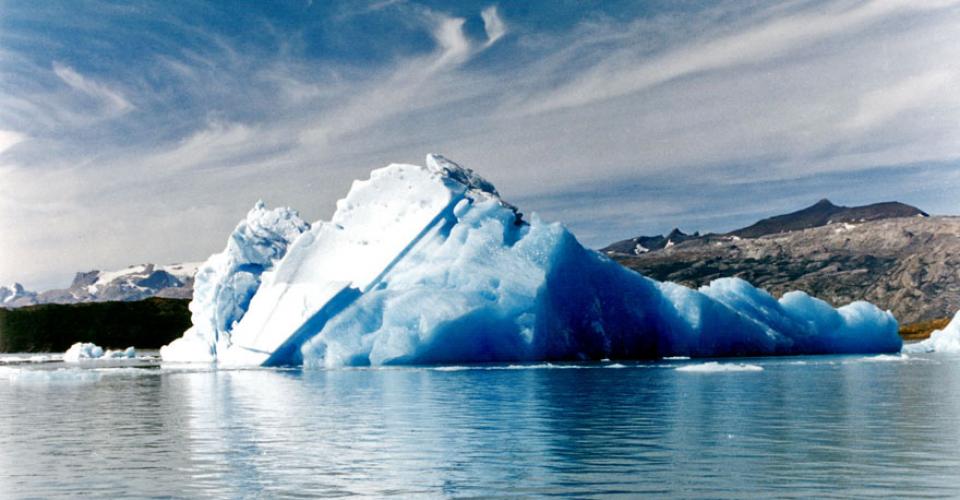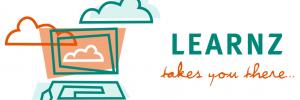Inquiring into the science of hāngi
27/11/2014The experience of laying a hāngi provided a relevant context for a science inquiry unit, writes BEN LAYBOURN.

Introduction
Since 2007, with the introduction of the new curriculum, the shift and debate around science education has focused on the question of ‘What is the Nature of Science?’ This question is a philosophical one that impacts on how and what we teach. With the 2007 curriculum emphasising key competencies, it also introduced an overarching strand in science called the Nature of Science.
How is the Nature of Science best taught and experienced at all levels of the curriculum? Recently NZCER has produced a number of research papers into science education, challenging the current status of teaching and learning in our education system.
I have been working in science education for a number of years now, and there’s been an ongoing debate of how best to teach these concepts, while also dealing with the content-driven NZQA level 1 achievement standards.
Focus
In this inquiry I have focused on shifting my science pedagogy from one of a traditional content-driven curriculum to one that is process and investigation-driven. The focus is on investigating and communication though participation and contribution and this leads to understanding about science.
At my school this year, we experimented with a number of different approaches. These were influenced by a number of factors, the student attitude to each approach, their level of engagement and willingness to try, the flexibility or issues we had with technology and student capability, and also the obstacles that exist in my head that I need to work through.
This investigation has been fluid in its approach, but firmly rooted in some pedagogical ideas that are current in educational thinking:
- Learning must be relevant for students to engage with it.
- Choice and autonomy of a student enables greater engagement.
- Social constructivism is the idea learning and understanding is socially constructed in a learning environment.
- Cooperative learning and dialogue is a critical step in social constructivism.
- Co-construction of learning is based on learning-focused relationships between students and teachers.
- Learning through a scientific inquiry process is effective pedagogy and fits into the Nature of Science and achievement standards.
- Technology/IT should enable these processes to happen and facilitate the learning.
Links to school goals
There are strong links in this inquiry to Makoura College’s school goals. We place importance on meaningful and relevant curriculum for the student, academic achievement, and effective formative assessment.
Within this inquiry, students were encouraged to take a greater role in their learning, make decisions, and think about the scientific process. Constructive feedback is important in helping students move forward in their learning.
Part of the He Kākano project is to connect with Māori students and lift their achievement in line with their Māori identity. In science we are supporting this approach by carefully choosing learning contexts for our Māori students, hence the decision to work around hāngi in this particular inquiry.
Technology and IT
The technology was part of the main focus to begin with for this inquiry, but has turned into one of the greatest challenges. While we have computers, there have been significant issues within the school network. While these problems are surmountable, it has slowed down the investigation that I planned initially. We have managed to use the computers for sharing and communicating but not to the extent that I wished. We have not been able to extend further into collaborative or cooperative tools given our current limitations. This has caused frustration for both me and the students.
Reading, research and connections
My research materials have included papers from NZCER and Waikato University about the Nature of Science (NoS), John Hattie’s Visible learning, and Clarity in the classroom by Michael Absolum. These sources have helped shape my thinking around how the learning should be structured.
Bolstad and Gilbert (2012) identified six principles for future-oriented learning and teaching. These are:
- personalising learning
- new views of equity, diversity and inclusivity
- a curriculum that uses knowledge to develop learning capacity
- rethinking learners’ and teachers’ roles
- a culture of continuous learning for teachers and educational leaders
- new kinds of partnerships and relationships: schools no longer siloed from the community.
Taking these principles into account has helped clarify the changes we are making in the science curriculum.
The move toward choice and autonomy in learning has shifted the balance and roles between the teacher and student. Very little whole class teaching was done in the second half of the year, as most students had shifted from dependent to independent working. Next year, we will try to establish more science connections in our community.
In the article Future-orientated Science Learning from NZCER, a framework to think about delivery of science was created. This framework is based on the following assumptions:
- If school science is to be relevant and engaging for students, it will require greater student decision-making about their own learning—what is learned, how it is learned and how it is assessed. This does not downplay the important role of the teacher or the curriculum. However, it does recognise the value of taking into account student interests when designing a future-oriented science education programme.
- If school science is to meet the needs of students in the ‘knowledge age’, it needs to engage with contemporary scientific practice. This means that students gain, through their science education, insights into science as a complex, multidisciplinary endeavour addressing real-world questions. Offering students opportunities to engage with contemporary scientific practice may require them to interact with the science community, as well as other people who are engaged with, using or generating scientific knowledge.
- Digital technologies will play a key part in transforming what might be learned, and how learning might occur.
ULearn and its impact
I attended the 2013 Ulearn conference and got inspired by the many effective ideas on display. As a school we are significantly behind in delivery of e-learning, especially the progress in Primary schools seems to be greater in this regard. I found that many other secondary schools are having similar issues around how to deliver effective e-learning.
There were a couple of excellent workshops. One was presented by Papamoa College, who are delivering a similar inquiry science programme to their students. Their target was to do 12 credits and then prepare for an exam. It was interesting to note the pedagogical conclusions that Papamoa had reached based on the current thinking both of NoS, effective pedagogy and the curriculum. It was reassuring that another college was approaching learning in the same manner.
Putting it into practice: curriculum development and the hāngi project
The heart of the investigation took place in term two and three. We wove the four NoS standards and four assessments around the context of preparation for a school hāngi.
This unit began with an introduction whereby students were taken though some experiments and exploration of the concepts they were going to explore. The student had a choice of which standard to focus on. They had an investigation into bacteria and what substances would kill it. This was approached in the context of hygiene preparing for the hāngi. The standard was Sci 1.11.
Secondly there was an investigation into choosing fuel for the hāngi, based on how much heat different types of wood would create when burned. (Science Carbon Sci 1.6.)
Thirdly there was an investigation into the specific heat capacity of types of rock. (Sci 1.4 Heat achievement standard.)
We undertook another experiment around insulation and how it worked to reduce heat loss. (Sci 1.4 Heat achievement standard.)
The hāngi itself could cover either Sci1.4 or Physics 1.1.
The students could choose which one to do and they were scaffolded through the beginning of each experiment. They were exposed to the key concepts and developed these ideas through cooperative activities, discussions, front loading and direct teaching of the concepts.
After making their choice, they worked through the inquiry process in groups, including experiments and research, to develop their final write-up. Data analysis was done using Excel.
Once they had drafted this work, it was submitted for review. This was done electronically and then it was reviewed with exchange of e-mails, outlining areas for further development. Once this was addressed and rewritten it was submitted for marking.
The second part of this unit was the actual preparation of a hāngi. This is quite an exercise and could have been quite expensive. But it was a success thanks to kind donations from our community. VuW supplied some high temperature thermocouples to measure the high temperature. As the hāngi cooked the temperatures were logged and recorded onto a computer. This data gathering was part of the next standard: Physics 1.1.
Student work examples
Below is a piece work completed by a student who was relatively disengaged, lacked confidence and ability in science and rated herself as a 2/4 for engagement. In a goal setting exercise, she aimed to get ten credits over the year. This piece of work took her about 9-10 hours to do, and required a number of conversations, post-hangi, to help shape her thinking. She engaged and participated fully in the hangi preparation. She achieved this standard and her attitude changed based on this experience. (click to enlarge)
Here is another example of the level of work resulting from this teaching approach. The work is done by a student of reasonably high ability. You can see the level of complexity and understanding of the science concepts. The student has taken the practical experience and tied it to the science and worked through the inquiry process to explore how the hāngi works. (click to enlarge)
I was very happy with the work produced in this unit, and the approach we took. I believe the work tied in to a culturally-relevant experience that had the nature of science woven through it.
Progress data and analysis
|
Row Labels |
Count |
Student survey T1 |
Average of Student Survey T4 |
Average of percentage |
Average of Set Total Credits Earned |
|
European |
2 |
3.00 |
3.50 |
92.10 |
15.00 |
|
F |
1 |
2.00 |
3.00 |
91.00 |
16.00 |
|
M |
1 |
4.00 |
4.00 |
93.20 |
14.00 |
|
Maori |
17 |
2.53 |
2.76 |
84.03 |
14.71 |
|
F |
8 |
2.63 |
2.75 |
83.92 |
15.25 |
|
M |
9 |
2.44 |
2.78 |
84.13 |
14.22 |
|
Pasifika |
1 |
2.00 |
3.00 |
86.41 |
18.00 |
|
F |
1 |
2.00 |
3.00 |
86.41 |
18.00 |
|
Grand Total |
20 |
2.55 |
2.85 |
84.96 |
14.90 |
This data is part of what we collect at school tracking student progress, achievement, attendance and engagement. Engagement is done by a simple survey taken by students (see appendix). In this analysis of the data, it is interesting to note that in the first term, the average student survey grade was 2.55 out of 4. This was one of the first indicators that students were significantly disengaged. Over the year, this engagement shifted from 2.55 to 2.85/4. I think the structure of the survey affected the final count, with students being reluctant to rate themselves highly on engagement. Consistently I evaluated them higher than they rated themselves.

Attendance
Attendance rates pose a challenge in Year 11 at our school. The goal for all Year 11 classes is to have a greater than 80% attendance rate, which is an indicator of an engaging class. This class has a rate of 84.96%, with 12 students (see appendix) having attendance rates over 85% .

Achievement
The school goal for subjects this year has been 16 credits per subject. This has been the goal across the school based on the idea of 80 credits = 5 subjects x 16. This equates to gaining 4 credits per term. This achievement in the graph below shows the progress toward this for the science class.

Conclusion
This inquiry signified an important shift in my pedagogy. I conclude that the changes in this course have been beneficial to learning. Student attendance and achievement are all indicators that the course has led to higher engagement and a willingness to move on in science education.
The average credit count for this class was slightly below target (average result being 15.4, target being 16). From this class, seven students made a serious attempt in the examination at the end of the year. 12 students from the class of 20 are taking science subjects at Year 12 level. While this may not appear significant in some cases, for Makoura College this level of achievement is positive.
The blended learning environment did not live up to my hopes, but the social constructivist model of education in a science inquiry classroom is making progress. It has mixed outcomes and still has some way to go. There are a number of factors that need considering for next year.
The other indicator that this approach has worked is the positive attitude toward the learning that has developed. Given the freedom and engagement in the class, students were on time to class and prepared to engage.
Next steps
I’d like to shape this work further. The greatest frustration I had was working with the technology involved. Next year our school will have faster internet access, and so I envisage fewer problems.
I would like to look into other relevant and engaging topics that can be linked to the NCEA level 1 standards and The New Zealand Curriculum. Possible contexts are Māori medicine, water and drought in the Wairarapa, and effect of agricultural pollution on waterways.
I would also like to work on the flipped classroom model in terms of course content. I believe that this will reduce the demands on the teacher in class and give the students better autonomy.
One of the problems in this course was we did not do adequate preparation for each unit. Next year given the work this year we can have exemplars and clearly defined assessments already in place if the same contexts are used.
Recommendations for others
This style of delivery of giving choice and autonomy to students keeps the class busy and engaged, and sees the teacher constantly working with small groups and individual students. If you want to give it a go consider how you wish to manage this change in intensity.
Acknowledgements
I would like to acknowledge Howard Lukefahr from Victoria University of Wellington for his time and energy helping us, setting up thermocouples and equipment for us so we could measure the heat. It was really a privilege having him help and explain things, such as the physics of heat.
Research and references
Some key resources used in research for this inquiry:
Attendance at ULearn 2013 (sponsored by this scholarship)
Papamoa maths and science departments
Clarity in the classroom using formative assessment, Michael Absolum
Visible Learning, John Hattie
The art of teaching science, Gary Venville and Vaile Dawson
The art of teaching primary science, Gary Venville and Vaile Dawson
Ministry of education publications 2012/13 in conjunction with NZCER
- Building a science curriculum with an effective nature of science component
- E-in – science developing innovation
- e in science : future oriented science learning
- Building a future orientated science education system: how are we doing?
- NCEA and curriculum innovation: learning from change in three schools
- This article was prepared by Ben Laybourn as an end-of-inquiry report for a 2013 Masterton Lands Trust Research Grant and also presented at 2014 ULearn.
- Ben Laybourn was a science teacher at Makoura College. Ben is now working for Evaluation Associates Ltd as a Leadership and Formative Assessment Facilitator.
























